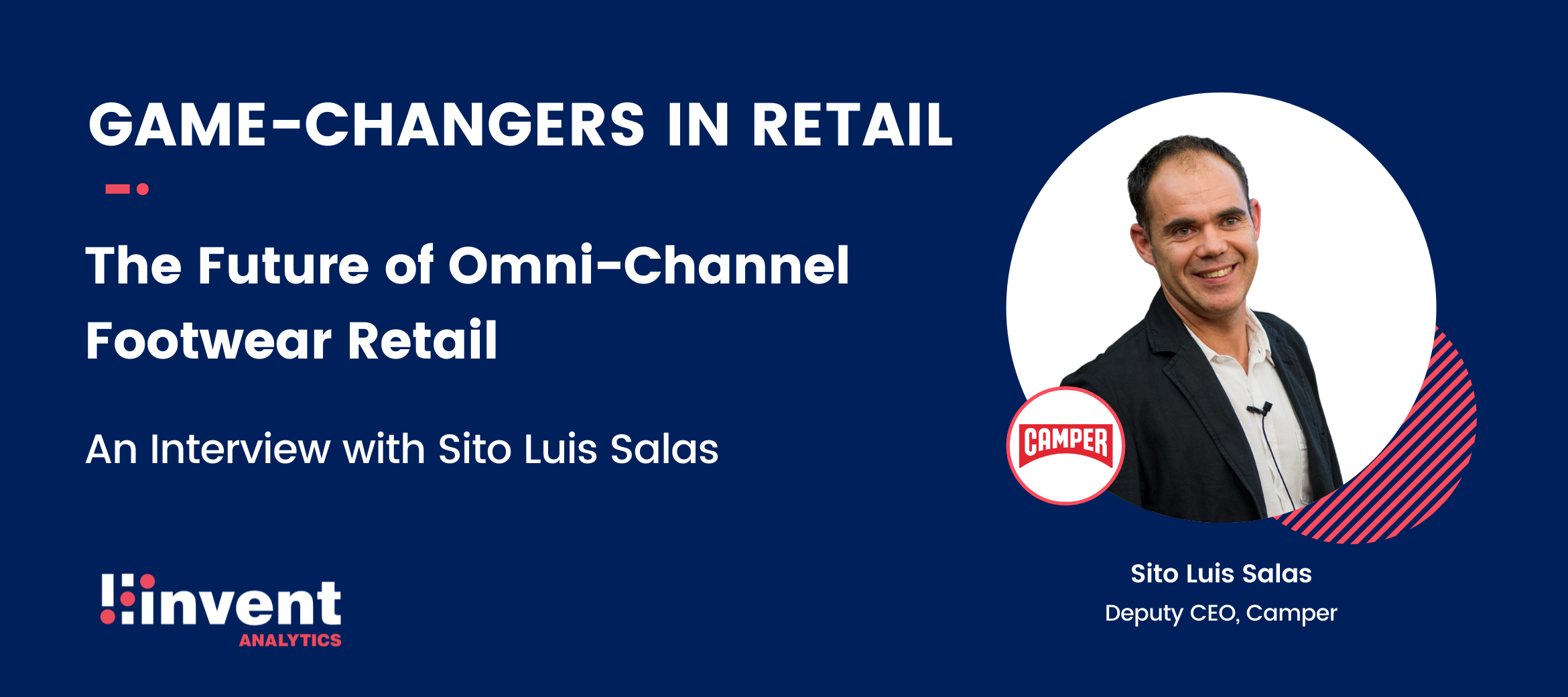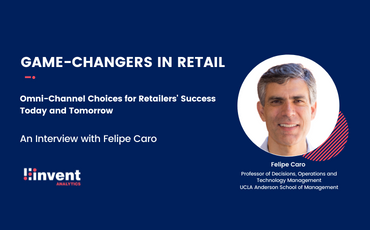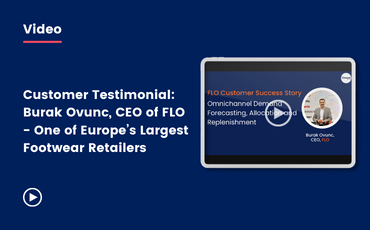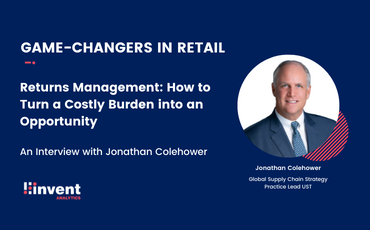
The Future of Omni-Channel Footwear Retail
Game-changers in Retail: An Interview with Sito Luis Salas, Deputy CEO, Camper
For many footwear retailers, improving inventory planning and supply chain is vital for becoming more customer-centric and omni-channel. Implementing AI-based advanced solutions and developing sophisticated capabilities help them adapt, improve and thrive.
As a part of our Game-changers in Retail Series, we sat down with Sito Luis Salas, Deputy CEO at Camper, a global shoe retailer and a pioneer company in omni-channel operations. We asked Sito Luis Salas how footwear retailers can become the omni-channel retail champions of tomorrow.
Retailers are going through an omni-channel transformation. How do you see the changing retail dynamics?
Customers’ ever-increasing appetite and enthusiasm for omni-channel experiences have already paved the way for retailers to transform their operations. Retailers are now integrating physical and digital channels into an omni-channel retail format to meet their customers at every point of their journey.
For some retailers, that means opening new brick-and-mortar stores -as a large number of customers still prefer in-store shopping. For others, it means leveraging digital technologies to open online channels. We also see some retailers closing their stores or maybe a part of their network. And for companies like Camper, the goal is to advance the usage of digital technologies in our stores and in other online channels.
What are the fundamentals in any footwear retailer’s success in an omni-channel era?
It’s not just the omni-channel customer experiences that retailers need to enhance to succeed in the omni-channel era. They also need to connect their inventory successfully. For example, when footwear retailers connect their stocks, they can interlink customer journeys online and offline. As a result, they can improve the availability of the products and delivery; therefore, they increase their chance of making a sale.
Secondly, retailers need to leverage the technology to combine two worlds – digital and physical. They need to have physical inventory across their networks and integrate them to both digital channels.
Lastly, footwear retailers need to have online visibility in all their stocks. This is very much about leveraging technology, but it is also a process that needs to be managed flawlessly.

What do you consider as the biggest supply chain challenges or opportunities in omni-channel retail?
The lines between online and in-store retailing have become increasingly blurred. To succeed in the omni-channel retail era, retailers need to:
- Have real-time inventory visibility:
For footwear retailers, inventory management is a critical element of their supply chain. The goal is to have the right product in the right place at the right time, and that requires real-time inventory visibility -knowing when to order, how much to order, and store.
- Forecast demand for each channel:
Accurately forecasting demand for each channel and anticipating customers’ expectations is a must for footwear retailers. This way, they can take the right actions to ensure they hold the correct amounts of stock to deliver high fulfillment rates.
- Forecast stock returns:
Return forecasting is also crucial as returns are increasing day by day. Without the physical experience of seeing, touching or trying a pair of shoes, omnic-hannel customers are buying multiple sizes with the intent of returning the ones that don’t fit. For footwear retailers, this is an economical cost and sustainability cost. Therefore, it is essential to forecast returns and have a clear overview of the associated costs.
- Do better planning:
Planning is key to reducing and eliminating stockouts and fulfilment costs which drains any retailers’ profit margins. Therefore, retailers need to excel at planning to optimize stocks and meet omni-channel customer demand better.

How important do you think it is to have accurate, granular level demand forecasting to avoid lost sales? And what are the things retailers need to do to reduce lost sales?
I think granular level forecasting is super important. Generating highly accurate forecasts at all levels of granularity and creating good forecasts at SKU and point of sale level is essential to position inventory successfully. Having successful demand forecasting capabilities also mean efficiency from a logistics point of view.
How can footwear retailers maximize inventory availability?
Maximizing availability starts with having good visibility. Once you have excellent inventory visibility in your supply chain, you can start planning better, reduce stock levels, increase demand fulfillment, gain insights into your inventory at stores and warehouses and see which products are performing best. Also, having in-transit inventory visibility and returns visibility is necessary for any retailer who wants to maximize availability.
Long-term forecasting is another element that can help. For footwear retailers, the supply chain is quite a long process. We need to do our forecasts at least 4-5 months in advance. Having accurate long-term also in-season forecasting helps a lot to become more efficient.
How can retailers minimize fulfillment costs?
The challenge for retailers is to optimize their supply chain network design to fulfill omni-channel orders at a low cost. Using stores as hub stores for fulfillment in response to accelerated online demand is a great way to minimize cost. That means using stores to ship out online orders, delivering a more productive fulfillment model. At Camper, we use this model very efficiently.
We also use iPads at our stores. Our customers visiting our stores can place orders using iPads and get them delivered to a location of their choice. So, I’d say rethinking the role of the stores, improving omni-channel fulfillment performance, and using hub stores in our fulfillment strategy has been very efficient for us.
What do you think footwear retailers need to do so well to meet the omni-channel customer demand?
I believe omni-channel retail is here to stay. Retailers need to have a good strategy and master omni-channel tech, monitor supply chains, manage inventories successfully, and deliver goods in the best way possible. That way, they can deliver an outstanding experience for their omni-channel customers.
At Camper, we invest highly in having all the omni-channel functionalities. This is a journey that we started ten years ago, and now we are making sure that everything is connected -both online and brick-and-mortar stores. As a part of our omni-channel strategy, we are also using the ‘Ship from Store’ model to leverage inventory held in our physical stores and make it available to sell through our online store or online marketplaces. We offer our customers more stock and faster delivery by utilizing nearby stores.
What do you think will be the key trends shaping the retail industry in the coming years?
In the near future, I believe improved inventory visibility, accurate long-term demand forecasting, and efficient fulfillment capabilities will be the key trends shaping the retail industry.
Finally, what do you think should be the top 3 inventory planning strategies for footwear retailers to become the Omni-Retail Champions of tomorrow?
The winners – now and moving forward – will be the retailers that quickly advance their omni-channel capabilities to outpace competitors. That includes excelling at forecasting the next season demand for initial buying, improving in-season planning, and advancing at margin management.
Thank you Sito.




